Children learn best with hands-on activities, exploring a variety of materials with different properties. Sandpaper is one material that is especially fun to experiment with – it has unique texture, it’s easy to use, and it makes funny scratchy sounds!
In this STEAM activity, kids draw squiggly lines on a piece of wood, and then observe what sandpaper can do to the drawings.
Provide the following materials:
- wood pieces, free of splinters
- a pencil, a crayon and a marker
- sanding blocks with two different grades of sandpaper, an 80 count and a 220 count
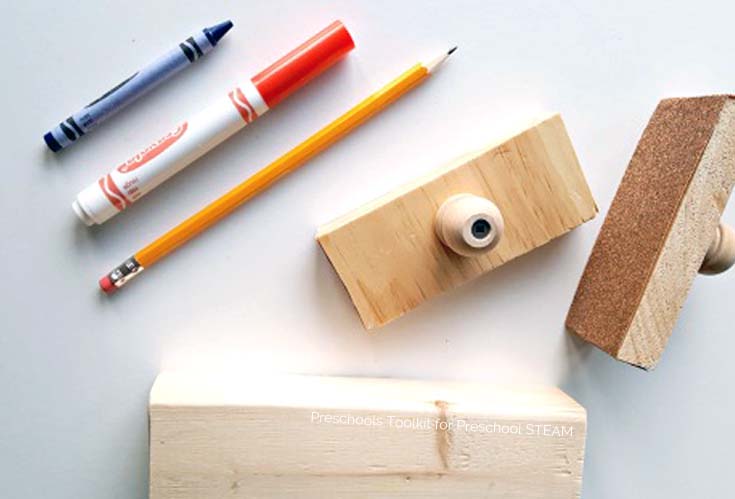
Ask: Can sandpaper remove the squiggly lines? Does one sandpaper grade perform better than another?
Hypothesis: The pencil makes a lighter mark and can be removed easily. The sandpaper can’t remove the red marker. The 80 grade sandpaper will do a better job because it feels rougher and will easily scrape off the marks.
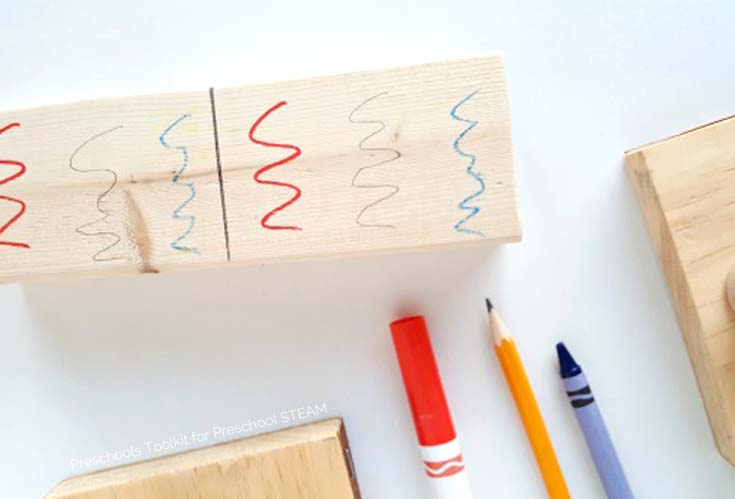
Experiment:
Divide the wood block in two with a pencil line down the middle.
Make a squiggly line with each art tool on either side of the pencil mark.
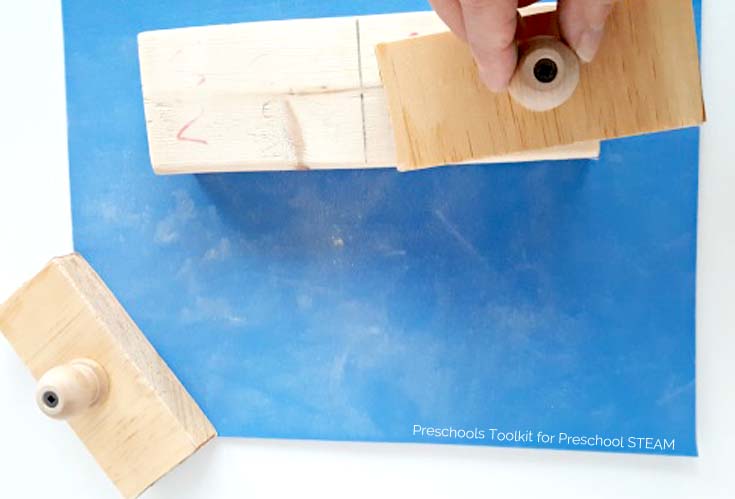
You can make simple sanding blocks with pieces of sandpaper stapled to blocks of wood. Fasten a pull knob to the top of the sanding block with a screw nail.
Start rubbing a sanding block over the drawings.
The rougher grade of sandpaper is on the left, and the lighter grade is on the right.
Place a piece of craft foam under the wood block as you sand. This helps support the piece of wood as you move the sanding block over the drawings, and collects the sawdust that comes off the wood block.
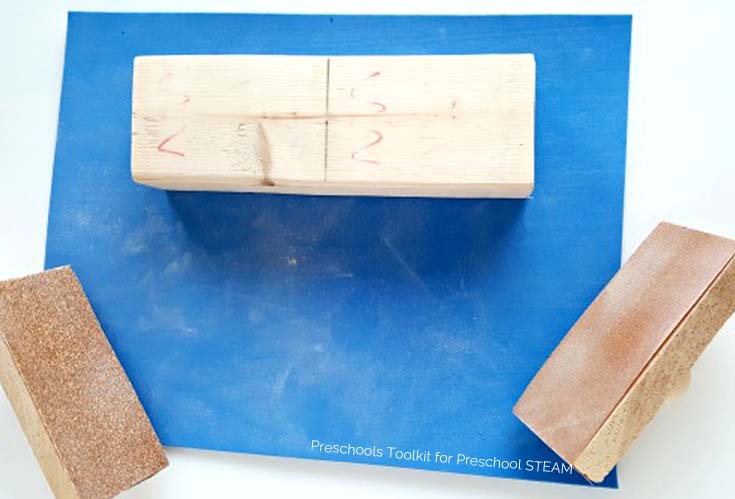
Observation: Is one mark easier than another to remove? Do you have to press down hard with the sanding block? How long do you have to rub over the crayon mark to remove it?
You will notice the sawdust on the paper. This is an indication that the sanding block is working! Rub your hand over the wood and you will see a light film of sawdust on your hand.
Conclusion: Sandpaper is very effective for removing marks from wood. The amount of pressure you use to draw the squiggly lines, and the amount of pressure you use to rub with the sanding block, can both affect the results of removing the marks from the wood.
The pencil mark was the easiest one to remove. Both grades of sandpaper removed most of the squiggly lines but the rougher sandpaper removed a bit more of the red marker in the same amount of time.
STEAM Integrations:
Science: Discuss the type of wood you used, soft wood or hard wood.
Technology: The writing tools and the sandpaper are the tools used to carry out the activity.
Engineering: Build with your sanded pieces of wood.
Art: Children create drawings on the wood with the art tools.
Math: Children use math concepts when they count the number of times they rub over a squiggly line with the sanding block, and record the length of time it takes to remove all the squiggly lines.
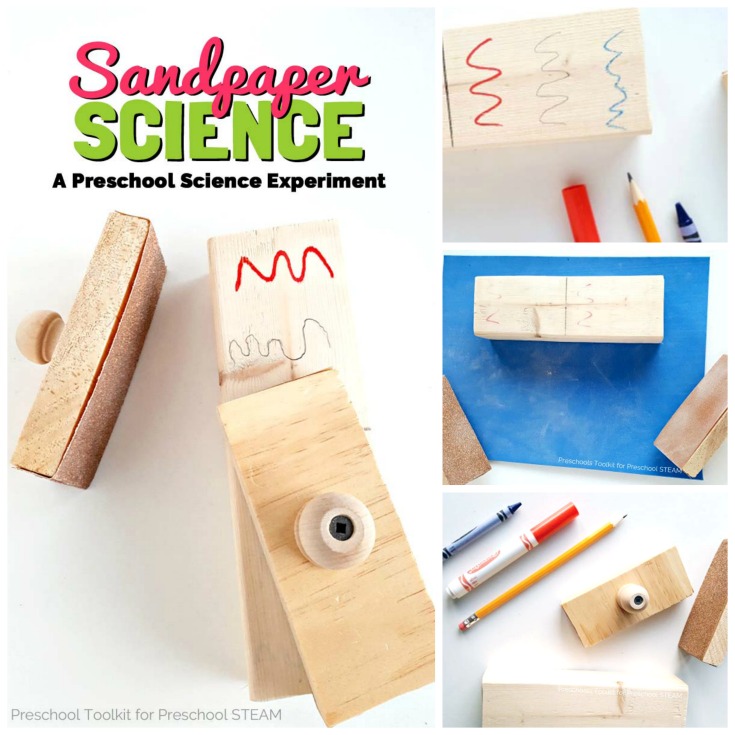
This simple activity is a great way to get kids involved with STEAM.
Kids can conduct the sandpaper experiment almost immediately just by picking up and exploring the materials you provide. They might like to write their names on a piece of wood and watch them disappear with the sanding block!
About the Author:
Heather is a former preschool teacher and founder of preschooltoolkit.com, a website providing early learning resources for teachers and parents. She focuses on creating fun crafts and activities that engage developmental skills while promoting hands-on learning through play. Follow her on Facebook, Pinterest, Twitter, Instagram, Google+ and Linkedin.
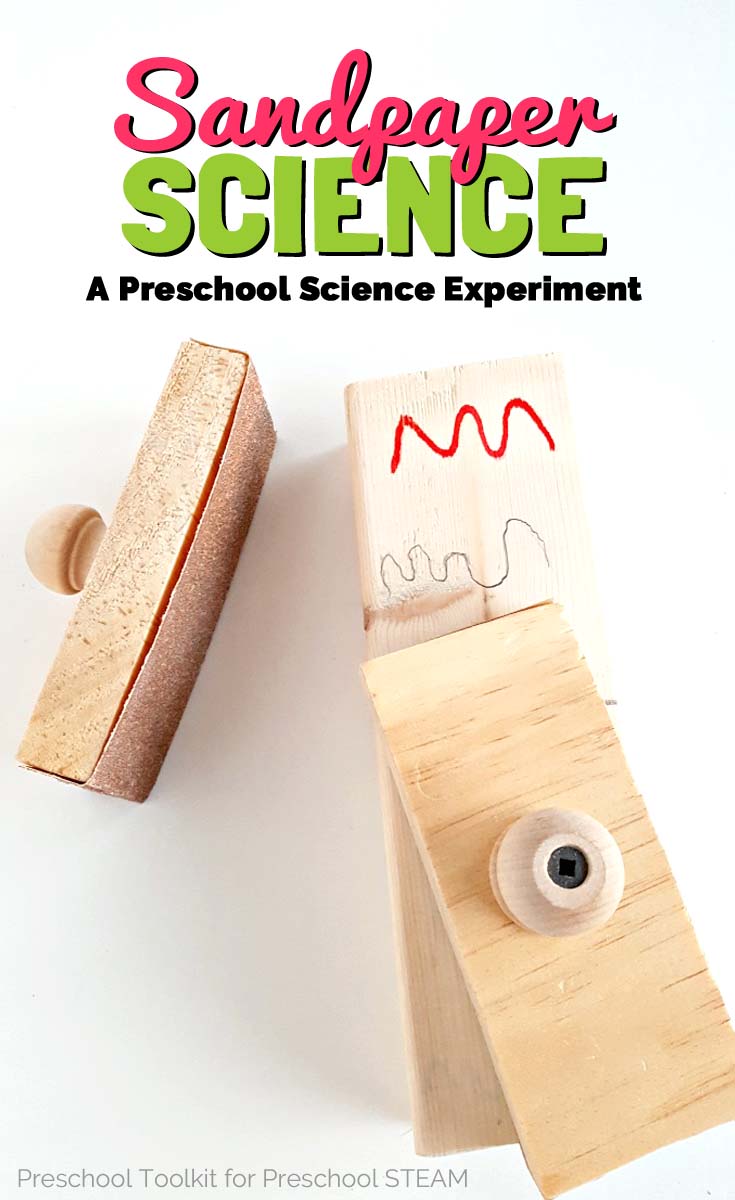

Is using sandpaper safe for children?